ASIA
When BMS’ first missionaries, William Carey and John Thomas, sailed away from England in 1793, their destination was the vast continent of Asia – and India in particular.
Arriving in Kolkata, the mission base moved after a few years to Serampore.
The Serampore Trio, as Carey and new recruits Marshman and Ward, became known, developed work in several areas including preaching, founding schools, printing and translation work. Missionaries were soon appointed to other parts of India.
By the mid-19th century, BMS was also able to turn its sights to China. The political situation opened the way for both traders and missionaries to enter the country and BMS’ first volunteers arrived in 1860. BMS work in China lasted for 90 years and involved nearly 400 missionaries who took part in evangelism and church work, medical mission, famine relief work, education, translation work and the distribution of Christian literature.
Missionary work in both India and China provided the foundation for a long-standing work in Asia, which continues today, notably in Nepal, Thailand, Sri Lanka and Indonesia, as well as in India.

China
Persecution, famine and war – these conditions formed the background to BMS work in China.
Although the first BMS mission workers to China were appointed in 1859, it was Timothy Richard, arriving in 1870, who opened up the work inland and aimed to contextualise Christianity in the Chinese culture. Richard was also instrumental in establishing relief work during the worst famine in modern Chinese history (1876-1879).
By 1900 a wave of anti-foreign feeling was sweeping across the country and as many as 30,000 Chinese Christians were massacred in the Boxer Rebellion. Mission workers were also targeted – 159 Protestant missionaries died including 12 BMS workers and three of their children.
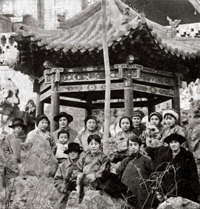
Despite persecution the Church began to grow again and BMS expanded its work in Christian literature, medicine and education, establishing hospitals, schools and a university.
The 1920s and 1930s saw intense persecution, severe famines, martyrdoms and the 1937 Japanese invasion of North China.
BMS mission workers gave themselves to the relief effort, feeding thousands of people, housing orphans and training pastors – seeing the Church grow.
But the inauguration of The Chinese People’s Republic in 1949 was the death blow to BMS work there. Mission workers were forced to withdraw, all leaving by 1952.
Timothy Richard
With bold ambitions to take the gospel to China and be an ambassador for God, Timothy Richard was a highly influential and yet controversial character.
Early life
Timothy Richard was from Camarthenshire in Wales. Converted during the revival of 1858-60 and after studying at Haverfordwest Baptist College, he applied to the Baptist Missionary Society for service in China.
The situation in China
The Opium Wars (1840s-1850s) had opened Chinese ports and cities not just to trade but also to missionaries. The BMS Committee decided in 1859 to send mission workers to China but the climate was not particularly favourable for Westerners; numerous missionaries died, others resigned, and the Committee considered withdrawing altogether.
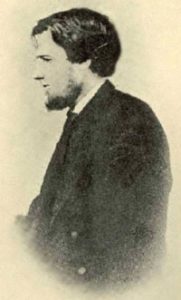
Soon after Timothy Richard arrived at the trading port of Yantai (Chefoo) in 1870, he found himself alone in charge of the mission and the sole representative of BMS in the country from 1874-1877. He felt that Yantai was not the best place for the BMS mission, particularly because several other mission societies were working there. Richard’s vision was to reach the Chinese interior and its vast population.
In the winter of 1875, he moved inland to the walled city of Qing Zhou (Ching-chou-fu), an important administrative, educational, business and religious centre in Shandong (Shantung) province, which had a population of 30,000 and more scope and hope for evangelistic activity.
Strategy
Richard believed that ‘the best way to make Christianity indigenous was to adopt Chinese methods of propagation’ ie giving Christianity a Chinese face. Richard’s methods were inspired by the Scripture passage: ‘whatever town or village you enter, search for some worthy person there and stay at his house until you leave’ (Matt 10: 11). He believed that the way to witness was to find the ‘worthy’ men of integrity and use their influence to reach the rest of society.
Richard sought out the religious teachers and educated government officials. He realised that it was important to approach discussion and witness from within the culture and present Christianity in a form acceptable to the Chinese. In order to further immerse himself in the culture, Richard mastered the language, wore Chinese dress and took a Chinese name: Li Ti-mo-tai.
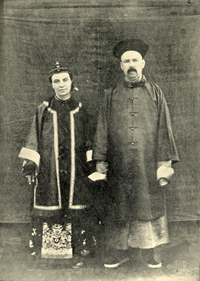
Among ordinary people, Richard and the first Chinese evangelists used methods of public story-telling in their witness. They hired a room open to the main street and, whilst tea was served, they talked to the crowds and told stories. Occasionally they were able to hold deeper conversations with individuals.
After two years, there had been over 300 baptisms and there were a thousand enquirers to keep Richard, other missionaries and the local Chinese pastor busy. Richard organised new Christians into groups with local leaders and they came periodically from the villages to the city of Qing Zhou (Ching-chou-fu) for training. Richard’s vision was for evangelism to be done by indigenous itinerant workers. The Chinese church was being structured as a self-financing, self-governing and self-propagating body.
Diverse activities
China was regularly subjected to famine. The missionary-led attempt to relieve the famine in the winter of 1876/7 was one of the first major programmes of humanitarian relief in modern history. Richard became the most important organiser and administrator of the famine relief and funds that arrived in several provinces from overseas.
In response to the severe famines that had ravaged the land, Richard believed that modern science was needed to avert similar future catastrophes. He spent four years writing and holding a series of lectures to the educated classes on apologetic and scientific issues. He also firmly believed in the importance of education for the spread of the gospel and dreamed of establishing a Christian college in every province in China, an idea not supported by the Committee back home.
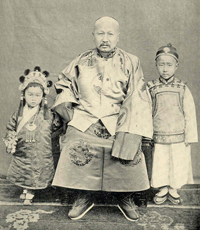
However, as reparation for an earlier persecution of Christians, the Governor of Shanxi province consulted Richard on something appropriate and he proposed a university at Taiyuan, with both Chinese and Western departments. Although it was forbidden to teach Christianity on the curriculum, Richard as Chancellor was able to appoint numerous Christian missionaries on the teaching staff.
During his last 28 years in China spent in Shanghai, Richard had a share in the production of at least 300 books, which were instrumental in opening up China to Western knowledge. His other activities and passions included:
- Education projects
- Campaigning in the Anti-Footbinding Society
- Serving as the Secretary of the International Red Cross Society in Shanghai
- Editing The Tiensin Times whilst he was in Tianjin (Tiensin)
- General Secretary of the Society for the Diffusion of Christian and General
- Knowledge, where he was supported by BMS until his retirement in 1914
Controversial but committed
Richard was ‘an original but controversial missionary thinker’, not always popular with the fellow missionaries and sometimes not in agreement with the Committee. Not all shared his visions for educational work and he was refused money and support for many of his planned projects. Some people disliked his techniques of mission and evangelism and others disagreed with his theology.
On the other hand, Richard was an enthusiastic and committed man. Throughout his life, he was always studying and learning more. The relationships he built with Chinese government officials aided the missionary work and also led to the Chinese government calling upon him as the Protestant advisor on foreign missions. In recognition of his work, Richard and his ancestors for three generations were granted the highest Chinese rank.
Others have sung Richard’s praise as being without parallel in BMS history. One described him as “one of the greatest missionaries whom any branch of the Church, whether Roman Catholic, Russian Orthodox or Protestant, has ever sent to China” and another wrote of him as “a remarkable blending of shrinking modesty and vaulting ambition, of benignity of expression interrupted by occasional flashes of flaming indignation; of self-abnegation approximating to servility, combined with a restlessness of contradiction and an indomitable self-will.”
Richard himself advised others in their conduct:
If you see the Governor, do not look upon yourselves only as the representatives of the Missionary Society; remember that you are ambassadors of God.
Boxer Rebellion
In telling the great mission stories of the past, we do not want to pass over the darker and more tragic episodes of BMS’ history.
In the summer and autumn months of 1900, letters and telegrams were received from missionaries in China describing their escape from a group of rebels known as ‘Boxers’. BMS praised God for their safety – but there was still no communication from the province of Shanxi and relatives were left in a state of ‘grave anxiety’.
A hastily written telegram arrived from China in October 1900:
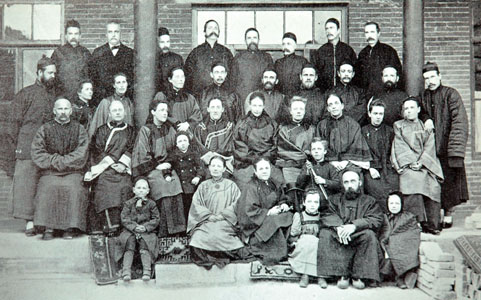
Reliable educated native has brought news from Shanxi. Mission houses in Taiyuan burned…. Missionaries fled there… promised safety, immediately massacred, altogether thirty-three Protestants. Probable total, fifty-one foreigners, besides many natives. Xinzhou, six persons escaped mountains horseback… fate unknown.
The entire staff at Taiyuan had fallen victim to the mysterious and murderous rebels. Hope for the Xinzhou workers survived though – had they escaped successfully to the mountains? Were they still alive?
The situation of the workers in Xinzhou was finally confirmed in December 1900:
The telegram… removes all ground for hope. It mentions them by name, and tells of their discovery in a cave, where for five days they had been without food, and how, after promise of escort to the coast, they were cast into prison and afterwards murdered inside the city gate… the entire mission staff in the Province of Shanxi has perished.
So what exactly did happen to the mission workers?
This Boxer Rebellion was an uprising from 1899 to 1901 against foreign influence in areas such as trade, politics, religion and technology. In Shanxi province this led to the governor, Yuxian, issuing a proclamation, saying:
Foreign religions are reckless and oppressive, disrespectful to the gods and oppressive to the people. The righteous people will burn and kill.
Taiyuan
At the end of June 1900, the Boxers followed orders and set fire to houses and churches, killing Christians and foreigners. The missionaries from the town of Taiyuan fled from their burning buildings, and gathered together at a co-worker’s house. Three days later, four deputies, sent by the Governor, arrived with a band of soldiers, promising to escort them in safety to the coast.
But when the deputies finished speaking, the soldiers seized the missionaries, and took them to a house near the Governor’s residence. Here they were kept until 9 July. On that day they were taken to the open space in front of the Governor’s residence, and stripped to the waist, as usual with those beheaded.
The group of eight missionaries, along with their other colleagues, died there for their faith.
Xinzhou
Meanwhile, in Xinzhou, the small group of missionaries, not knowing what was going on in Taiyuan, decided that they must leave the town immediately. The group set out, in carts and on horseback, for the hills to the west. In the night they reached a village, where there were a few Christian families. But it was soon clear that their presence in the village was endangering the people, and the missionaries fled to seek shelter in a mountain cave.
The cave they were hiding in turned out to be a dark, damp hovel, with no water easily accessible. The food had by this time run out, and they were entirely dependent on villagers bringing them supplies. The Boxers meantime sought to harass them by every means, and finally conspired to starve them out.
On 20 July they heard that the Boxers were plotting their attack. The situation grew worse every day but the missionaries still hoped that they might be rescued. But that rescue never reached them, although they had succeeded in eluding capture and evading death for over twenty days.
Imperial troops arrived and, promising them protection, lured them back to the city of Xinzhou. There they were put into prison and kept in a dungeon for two weeks.
Then on 9 August 1900, the eight missionaries were led out, like their colleagues a month earlier, and beheaded like criminals at the gate of the city.
Only a year later, the BMS Committee made the brave decision to allow missionaries back into Shanxi to restart the work there, which continued on until 1950.
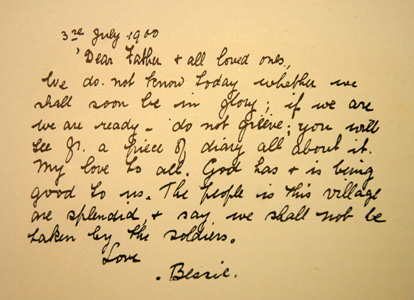
India & Bangladesh
At the end of the 18th century mission work was not welcomed by the East India Company in control of Bengal – they mistrusted anything that could interfere with its commercial activity.
After his arrival in 1793, Carey worked as foreman in an indigo factory in Bengal as well as working on Bible translations, preaching and setting up schools.
In 1800 new missionaries arrived from England and settled in the Danish colony of Serampore just north of Kolkata, which soon became the hub of Baptist activity in India.
The early years of mission in India were difficult and it was only after several years that the first convert under Baptist mission work – Krishna Pal – came to faith. However, the work was characterised by pioneering methods of evangelism and the driving urge to spread the gospel.
In the course of the nineteenth century, BMS work in India, and what is now known as Bangladesh, spread far and wide beyond Serampore and Kolkata: first within Bengal; later to Orissa and to the tribal peoples of the Kond Hills in that state; across North India and to Vellore in the south; and to the Lushai Hills in north east India (now Mizoram).
At the zenith of BMS’ mission in India, in around 1920, there were almost 250 European missionaries and up to 1,000 Indian workers.
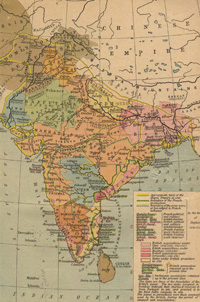
Mizoram
Headhunter tribes, dense forest and evil spirits were the welcome awaiting missionaries to the Lushai Hills of India (now known as Mizoram).
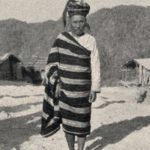
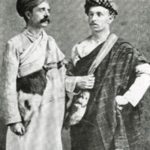
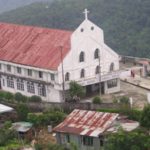
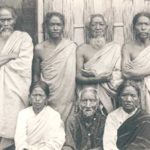
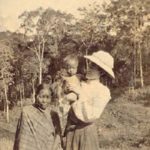
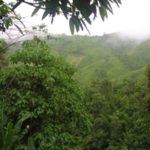
However, despite the apparent challenges, this scene would host a total change in the tribal beliefs, fears and development. In the 74 years of the Western missionary era there, the ‘unreached’ tribes of the Lushai Hills became a missionary-sending people.
At the end of the 19th century, various tribes inhabited the thick tropical forest-covered Lushai Hills. One of these tribes were the Lushai (who referred to themselves as the Mizo). They were nomadic cultivators, but were also known for less pleasant practices: the Lushai would raid the tribes living on the foothills and plains, decapitating some victims and carrying their heads back to the mountains as trophies, and capturing others alive and keeping them as slaves.
Tribes: fear in the mountains
Inter-tribal fighting was commonplace and just as the people of the plains feared the Lushai headhunters, the Lushai feared raids from the Pawi tribes living in the mountains to the east.
In terms of religion, all hill people lived in fear of the evil spirits that were believed to inhabit the mountains, valleys, forests and streams. Misfortune, sickness and death were all attributed to these spirits and innumerable sacrifices of domestic animals and poultry were made to appease them.
Pioneer message-bearers to the unreached tribes
This was the situation awaiting two missionaries, J H Lorrain and F W Savidge, who entered the region in 1894 with the backing of the ‘Arthington Aborigines Mission’. The strategy of the Arthington mission was to send out missionaries two-by-two to unevangelised tribes. Within four years, Lorrain and Savidge learnt the Lushai language, translated Luke, John and Acts and published a Lushai grammar and dictionary.
In 1897, the Welsh Calvinistic Methodists extended their work to Lushai, so Arthington withdrew his workers to avoid the duplication of missionary resources. However, Lorrain and Savidge desired to stay in the area and so formed their own mission, the ‘Assam Frontier Province Mission’, staying in the northeastern state of Arunachal Pradesh. In 1901, the Welsh mission agreed to cede the work in the south Lushai Hills to BMS. The BMS India Secretary wrote to Lorrain and Savidge suggesting that they return to Lushai under the auspices of BMS, and they arrived at Lunglei in March 1903.
Evangelism Mizo-style
In Lunglei there was an existing Christian community of 125 who had been converted by Welsh missionaries during visits from their station further north. Lorrain and Savidge began by preaching a traditional evangelical message of salvation from sin, but found that the Mizos had ‘no sense of sin and felt no need for such a Saviour’. So they changed their approach to fit in with the Mizo worldview, proclaiming Jesus as the vanquisher of the devil and his powers – and found a radically different response.
News of the revival that had swept through Wales spread to the Welsh mission field to the north of the Lushai Hills and encouraged prayers for a similar revival in Mizoram. The pace of conversions quickened noticeably, with chiefs professing Christianity and whole villages turning to Christ.
Until 1913 there was no organised church life because believers were scattered in over 80 different villages. Lorrain’s approach was to appoint the most mature Christian in each village as a ‘Sunday school superintendent’, charged with teaching all the other believers basic doctrine, hymns and reading skills. Thus the Sunday school became a key agent of both education and evangelism.
The duty of every convert to bring others to Christ was stressed from the outset. All converts were taught to tithe their crops to the church, which supported four evangelists from 1905.
Thus an unorganised church was already self-propagating and self-supporting. In his reports to BMS, Lorrain emphasised that they were not making Mizo Christians like western Baptists, but developing a national Lushai church.
The church-planting strategy adopted in Mizoram attracted the admiration of the rest of the BMS India mission; it was imaginative and had transcended denominational boundaries. In the years following World War One, Mizoram was experiencing the most spectacular example of church growth in any BMS field in the 20th century. Between 1919 and 1924, the total Baptist community grew from 3,670 to 8,770, and church membership from 1,017 to 3,198.
With what must have felt a great weight of achievement behind them, Savidge retired in 1925 and Lorrain in 1932. These pioneers were replaced by two couples that were to serve the Mizo church continuously almost to the close of the missionary era there: Horace and Betty Carter (1930-59) and Frank and Florence Raper (1932-61).
The Baptist churches continued to grow during the 1930s and 40s. By 1949, the Christian community was over 31,079 strong and church membership stood at 12,133. In 2008, the Baptist Church in Mizoram reports a membership of 120,589 in 410 local churches.
Education, healthcare and translation
The work of communicating the gospel was not only down to the missionaries. The first Sunday school superintendents evolved into elders in charge of village congregations and the first native pastor, Chuautera, was ordained in 1914.
Meanwhile the work expanded with summer schools from 1915, training classes for pastoral and evangelistic ministry from 1918, schools both for boys and girls, medical work, and the continuation of the translating and printing of Christian literature. Girls’ education and women’s work was pioneered by two long-serving missionaries – Edith Chapman and Marjorie Clark. In a society which originally regarded girls as not worth educating, by 1953, these ladies had trained nearly 80 Christian girls as certified teachers and leaders of women’s work in the villages.
Taking the message to others
The north east of India was the first to see the door close on the Western missionary presence. The rebellion of the Mizo National Front against rule from Delhi beginning in 1966 made the Indian government very sensitive to foreign influence in the territory and the last BMS missionaries had to leave in 1968. The establishment of the Union Territory of Mizoram in 1972 restored stability but the Western missionary era there had effectively ended.
However, the year the missionaries were leaving, the Zoram Baptist Mission was formed to co-ordinate the missionary outreach of the Baptist Church of the Mizo District. By 1989, the mission had 88 home missionaries working among non-Mizos in Mizoram, 50 working in other parts of India and 18 in training. This represented a Baptist communicant membership of just over 41,000 supporting more than 580 full time workers.
An inspiration
The Mizo Church is a powerful illustration of a poor rural community taking on the Christian principles and responsibilities of stewardship and evangelism instilled by Lorrain and the other pioneer missionaries.
It also shows that end of Western mission work does not mean the end of mission, but the start of a new and creative phase of mission.
Lushai – a tribe of people from the hills of northeast India
Lushai Hills – geographical district of British India (from 1898) where Lushai people live
Mizo – the name the Lushai use to refer to themselves
Mizoram – in 1972 the area was given Union Territory status (full title ‘Union Territory of Mizoram’) by the Indian government and it became a state of India in 1987 (State of Mizoram)
Pioneer doctor
Ellen Farrer, missionary doctor in India for 42 years.
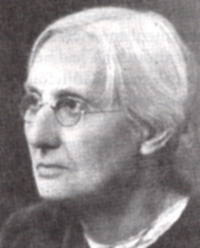
What would a young woman of the 1890s have felt as she contemplated becoming a missionary? Would she have been excited, fearful, nervous, expectant – or confident, assured, determined, full of faith? What would life have been like for her – a woman living in Britain, and later, overseas?
We know some answers from looking at the life of Ellen Farrer – a determined, yet unassuming, woman who no doubt experienced all those feelings as she began her application to work with the Baptist Zenana Mission in 1891. From her diaries, which she faithfully wrote for over 40 years, we can piece together a brief sketch of her life.
Female doctor
Ellen was a determined woman – she had been among the first women in the country to qualify as a doctor. She then had to face the prejudice against women doctors at the end of 19th century, and the incredible difficulty in getting any practical medical experience after graduating.
Eventually, though, she managed to secure a hospital post, and her life came to be made up of hospital work, prayer meetings, letter writing, reading, drama, meeting friends and teaching Sunday school.
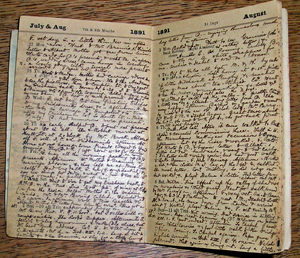
Hopes and dreams
During this time, in February 1891, Ellen applied to work with the Baptist Zenana Mission. She wrote down that her hopes and dreams were to be allowed ‘to develop medical mission work – even having a hospital if it seemed admirable’.
Ellen went to interview and ‘made a very pleasant impression’ on the Committee and was accepted unanimously.
Ellen was well aware of the realities of a woman’s position in the world at that time. Speaking at the Baptist Assembly in Manchester in 1891 Ellen did not miss the opportunity of pointing out the inconsistencies of the treatment of British women: while women were allowed to train as doctors and go abroad as missionaries, the same women would often be seen as ‘unwomanly’ at home and not allowed the same privileges.
India
Nonetheless, Ellen set sail for India in 1891 to take up her work as a missionary doctor. Arriving in Bhiwani in November of that year she took over a small dispensary in an Indian house. On the first day she saw three patients but it was a month before the first one could be persuaded to stay at the dispensary for treatment. How was she to gain their confidence?
A breakthrough came as she performed her first operation there. It was conducted in an open courtyard on a small boy of ten. At a critical moment a dust-storm blew up, which made any sterilising precautions useless. Despite this, though, the operation was still a success, and Ellen was able to gain a firm foothold in the confidence of the people. Gradually, by her careful, thorough and devoted service she was able to overcome all suspicion of her work.
Within a few months of her arrival in India the Baptist Zenana Mission was able to report that:
During the three months ending February 14th, Miss Farrer has had 1,471 cases, of whom 447 are new ones. In spite of much prejudice on the part of the patients, and many disappointments to ourselves, the medical mission has already gained ground, and has proved a most valuable help.
First hospital
It was not long before Ellen’s hopes and dreams noted on her application form saw fulfilment. In 1899 the first hospital buildings in Bhiwani opened after money had been raised during her first home assignment. The buildings were enlarged twice as the medical work grew and in 1923 a new hospital was built and named the Farrer Hospital.
Recognition
For 42 years, until her retirement in 1933, Ellen worked tirelessly, healing, teaching, training and administering. Twice the Indian Government showed its recognition of her contribution to the welfare of the Indian people by bestowing on her first the Kaiser-i-Hind Silver Medal and later the Gold Medal of the same order. Her distinguished public service was recognised – she had gained the confidence of her patients, the Indian government, and had also played a crucial role in the advancement of medical missionary work.
Perhaps a key to her tireless work and determination can be seen in a simple prayer she noted in her diary on New Year’s Eve 1891. On the last day of what she called “the most eventful year of my life” – the year she went to India – she quoted and prayed the following verse from a well-known hymn:
I dare not choose my lot –
I would not if I might
Choose thou for me, my God
So shall I walk aright.
And so, nervous, fearful, confident or hopeful, Ellen’s was a walk of determined surrender to her God.
Christian Hospital Chandraghona
The Christian Hospital in Chandraghona (CHC), Bangladesh, had humble beginnings, but through a remarkable patchwork history of unexpected gifts and troubles, has since become highly influential in providing community healthcare and serving the people of Bangladesh in the name of Jesus Christ.
Chandraghona: 100 years ago
Chandraghona, translated to mean Valley of the Moon, was a small village and government outpost in the 19th century, situated between the plains of Chittagong to the west and the Hill Tracts to the east.
It held a weekly bazaar, where the hill and plain people would meet to exchange goods. It had good access via roads and the river Karnaphuli, which flows through Rangamati, and eventually passes through the port of Chittagong and out into the Bay of Bengal.
William Carey’s oldest son, Felix, was the first Baptist missionary to work in the Chittagong area; however, the people living in the hills to the east were never reached. They were shy people, rarely venturing to the plain villages except to trade, and were members of different tribes, speaking different languages.
The need to reach these tribes was recognised by the later missionaries in the Chittagong area, who appealed for people to start work in the Lushai Hills and beyond. And so started BMS’ work in the Hill Tracts.
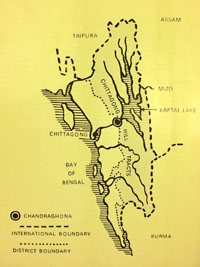
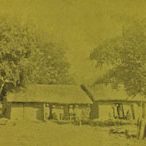
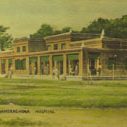
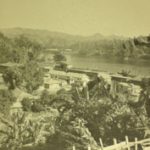
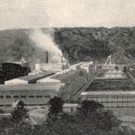
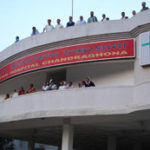
White ants and red bricks
In 1905 a dispensary was set up in a forest clearing, a very basic building made with bamboo matting for walls and a corrugated iron roof. The dispensary had only three rooms, and it soon became obvious that it was an inadequate working environment: extremely hot in summer, cold in winter, and riddled with white ants.
Work began in 1907 to construct a new building and, with the help of a substantial legacy left by Robert Arthington, a hospital was built – a more robust building of red bricks and a tiled roof. The hospital proper was opened in 1908 – with the vision to serve the 12 local tribal groups.
In 1913 the medical superintendent, Dr Teichmann, started a leprosy colony adjacent to the hospital. The colony received financial backing from the Pakistan government in 1949 and was developed to become the premier centre for leprosy research and treatment in the country.
By the 1920s the number of patients had increased steadily, leading to the building of a women’s ward and the arrival of the first English nurse, Sister Timmins, who helped train up other nurses. Today the training programme is known as the Nursing Training Institute (NTI). The NTI prioritises the training of Christian and tribal students from very poor communities who would not otherwise have the chance of admission to governmental nursing schools. NTI graduates now work in over half of the 64 districts within Bangladesh, and the improved health in Bangladesh communities has been attributed to their efforts.
The hospital has a strong Christian emphasis, with daily prayers for staff and patients, and Sunday services at the Baptist church which is situated in the hospital grounds.
Hospital drama
The hospital has survived many changes and challenges: treating Second World War casualties, modernising and expanding during the industrialisation of the 1950s, and narrowly avoiding devastation during the 1971 War of Liberation.
Second World War
The year 1939 brought major changes to the hospital – Dr Teichmann left Chandraghona, and the Second World War broke out, bringing with it many challenges but also some amazing stories.
In 1942 it seemed the hospital would have to close. Singapore had fallen, and the Japanese were advancing near the Chittagong Hill Tracts. British forces were not stationed near Chittagong, and there was no means by which to defend the hospital. The doctor in charge of CHC was advised to send his wife and children to a safer place, and the female nurses and some leprosy patients had been sent home. This left only two European missionaries at the hospital: Dr Bottoms and Sister Gladys Cann. Although thin-on-the-ground, the staff were able to keep the hospital open and treat a considerable number of RAF casualties for malaria and other illnesses and injuries.
Industrialisation
Industrialisation reached the Chandraghona district in the early 1950s, when a large paper mill was erected and a hydro-electric scheme started further upriver at Kaptai. The increased population of the area placed further demands on BMS staff at CHC, but the hospital also benefitted from its proximity to the paper mill. An electricity supply was installed in 1953 and, in 1955, the mill-owners generously provided a new operating theatre.
Agriculture
In 1965 David Stockley and his wife Joyce came to Chandraghona to develop the land attached to the leprosy home and hospital. They came across new challenges as the hydro-electric dam had put all the lowland under water, and in the Stockleys’ own optimistic words, “leaving an entirely new type of agriculture to be discovered!” As he brought new land into use by terracing the hillsides, introduced new rice varieties, and employed some of the ex-leprosy patients, David helped to move the leprosy centre towards self-sufficiency, significantly improving the health and livelihoods of the patients and local rural population.
Civil war
After years of promising developments, the hospital was hit by the next blow of disruption when civil war broke out. On 11 April 1971 the formation of the independent republic of Bangladesh was announced, with the exiled provisional government directing a War of Liberation against Pakistani forces. In the Chittagong area, Bengalis massacred Urdu-speakers, and rumours circulated of equivalent atrocities inflicted by the advancing Pakistani army on the Hindu population.
On 14 April the army advanced on Chandraghona, where Bengali troops were reported to be entrenched. The Pakistani major had orders to raze the hospital to the ground, but decided to investigate the situation first. He encountered no resistance, and the hospital was saved, though a mortar shell killed one patient in the leprosy centre. The hospital continued to function throughout the emergency.
Not the end
In 1998 building work started for a new hospital. Today Christian Hospital Chandraghona is large, with spacious wards, modern facilities and well-equipped operating theatres.
The hospital is run by BMS partner the Bangladesh Baptist Church Sanga (BBCS). BMS supports the hospital through grants and the personnel it sends. Since 2002, BMS has sent eight Medical Teams to CHC. Mission personnel are involved in both treating patients and training local staff:
It was hard work but we had two new doctors trained in ultrasound. I took on other things like lecturing at the nursing school, helping with mobile x-rays and continuing to improve general x-ray technique. The doctors came up to me clutching x-ray films to ask questions and it dawned on me that they had indeed taken on board aspects of the evening teaching sessions. Another significant aspect of the team’s presence was Christians there were encouraged. On a personal level I felt I had received much more than I had given. I had new friends on the team and at CHC. I had been given a new heart for this country and its people and I had heard God’s voice.
Dr Shyr Chui, Consultant Radiologist
Sri Lanka
Against the tide: the ebb and flow of mission work in Ceylon.
Ceylon was an island of bounty: coconuts, coffee, tea, rubber and sugar; tropical beaches, forest and highlands – it was the conquest prize of successive colonial powers, an important trade route and host to plantation industries of inequality. This was a land that William Carey, BMS’ founder, longed to include in his mission vision.
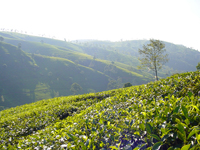
In less than ten years after the founding of BMS, the mission work was expanding out of India. Dutch rule in Ceylon had ended in 1796 and the British East India Company was gaining control. The first BMS missionaries to land on the shores of Ceylon (now the country of Sri Lanka) were James and Ann Chater in 1812. Located in the capital, Colombo, their aim was to establish a school and a thriving gospel church.
A valley of dry bones
Despite the great intentions and optimism of Chater, his church congregation was slow to increase beyond his own family. In 1813 Chater wrote,
Our congregation is at present but small; but I entertain the most sanguine hopes that I shall live to see the day when our place of worship, which would contain about 200 hearers, will need much enlargement. At present Columbo is indeed a valley of dry bones; but unpromising as appearances now are, it is my prayer, my hope, my expectation, that a church will be formed in it, that will be a nursery for missionaries, who may go forth and preach, ‘Christ crucified’, not to Cingalese only, but to Candians also.
Note: ‘Columbo’ refers to the Ceylon capital Colombo. ‘Cingalese’ (or Sinhalese) and ‘Candians’ were people groups in Ceylon.
The following year it seemed that his hopes were beginning to see fulfilment: in 1814 a Mr Sierce was baptised and joined Chater in his mission work.
But the work was hard going: the local population seemed unresponsive to the gospel; recent colonial presence had forced many to think of Christianity solely as a social necessity; and many were reverting back to Buddhism. After 17 years, Chater returned to England, but tragically, like his wife seven years earlier, he died on the journey home.
A nursery for missionaries?
Following Chater was a series of BMS missionaries who were able to greatly expand the work of the schools, church planting and also the production of Christian literature in the local Sinhalese language.
Ebenezer Daniel (1830-44) – Daniel had been a student in Bristol with Chater before going on to pastor a church in Luton for 18 years. Hearing of Chater’s death, Daniel was challenged and inspired to continue the work in Ceylon. He and his wife and three daughters arrived in Ceylon in 1830 and set to work, reviving the village schools and starting a programme of regular evangelistic preaching in 107 villages around Colombo. After five years in Ceylon, Daniel’s wife left for England but, again, she tragically died on the journey home. Daniel continued the work in Ceylon, and by 1838 there were six churches with a combined membership of 135, and 17 schools with about 450 pupils.
Joseph Harris (1835-43) and CC Dawson (1841-50) – Harris started the work to reach people in the ancient capital of Kandy. Dawson joined Harris in Kandy to establish a printing press to produce Sinhalese tracts and school books
Charles Carter (1853-81, 1888-91) – Carter was “a missionary of equal calibre to Daniel” (Stanley). He served in Kandy and produced Sinhalese translations of the Bible. Bishop Copleston of Colombo described Carter as ‘about the best Sinhalese scholar who has ever arisen from among European missionaries’: by 1862 he had completed a translation of the New Testament, and 14 years later he also finished the Old Testament translation. His Sinhalese Bible went on to completely replace the previous 1823 version.
By the end of the 19th century, new mission stations had been pioneered, church membership had risen and hundreds of children, many from Buddhist families, were being taught in Baptist schools.
However, the mission work was to experience new set-backs: the BMS financial situation led to a reduction in the number of mission personnel; and in the 1880s Buddhism began to develop an active opposition to Christianity.
Baptist churches could not find pastors; there were few evangelists and fewer trained teachers; and Buddhist parents were beginning to withdraw their children from religious classes in the Christian schools.
Steps were taken at the beginning of the 20th century to increase BMS mission activity, but with the creation of national Baptist organisations BMS work changed focus and, since its formation in 1958, BMS has worked through the Sri Lanka Baptist Sangamaya (Union).
Between 1812 and 1999 BMS sent over 100 missionaries to Ceylon/Sri Lanka. Although the cut-backs must have seemed to throw mission plans into turmoil at the time, in retrospect one BMS mission worker described it as ‘a blessing in disguise’: Chater’s prayer for missionaries to arise from within the national church was being answered!


